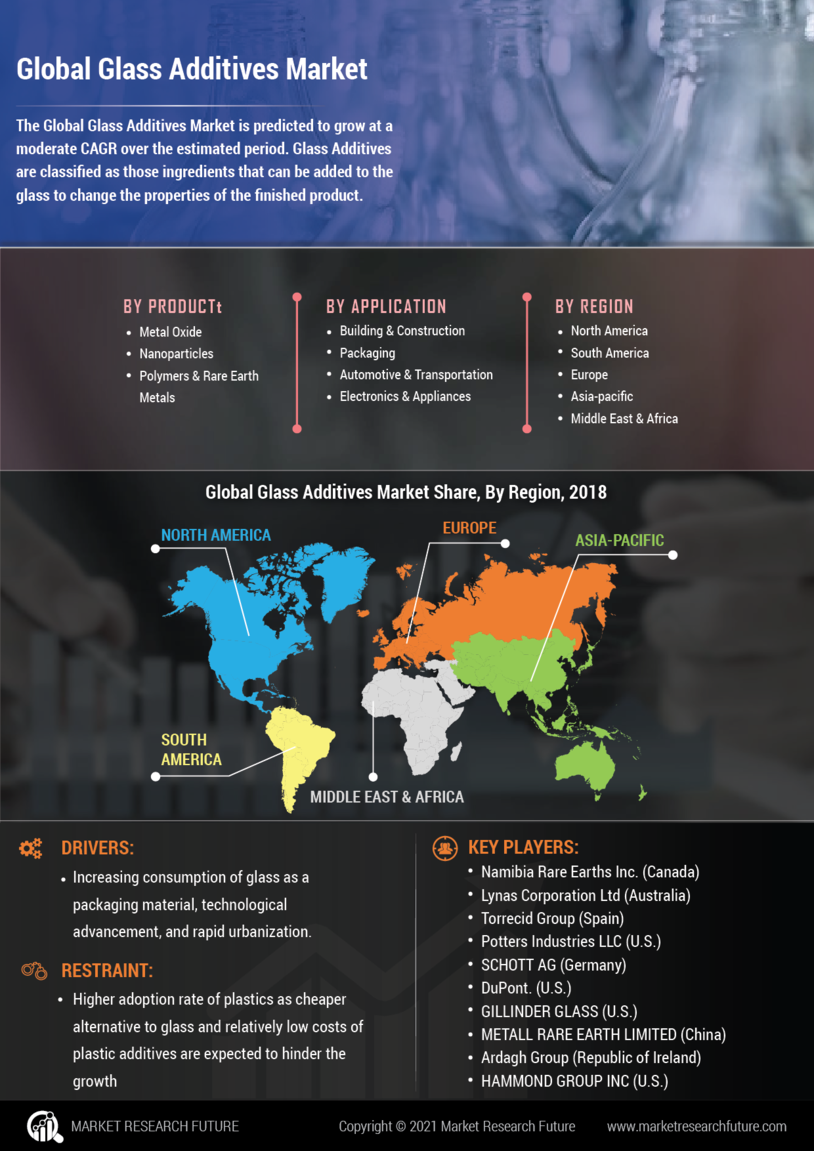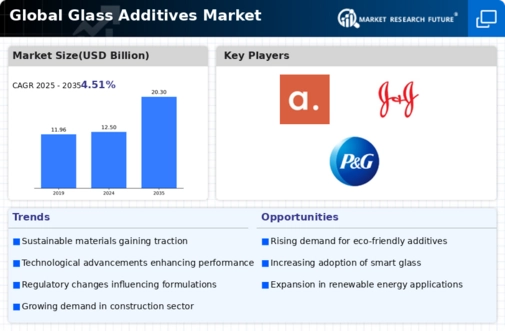Market Trends and Growth Projections
The Global Glass Additives Market Industry is poised for substantial growth, with projections indicating a market value of 12.5 USD Billion in 2024 and an anticipated increase to 20.3 USD Billion by 2035. The industry is expected to experience a CAGR of 4.51% from 2025 to 2035, reflecting the ongoing demand for innovative glass solutions across various sectors. This growth is driven by factors such as technological advancements, increasing applications in electronics, and the rising need for sustainable materials. As the market evolves, stakeholders are likely to focus on developing new additives that enhance product performance and meet changing consumer preferences.
Increasing Applications in Electronics
The integration of glass in electronic devices is a burgeoning trend that is positively impacting the Global Glass Additives Market Industry. Glass is increasingly utilized in screens and displays due to its superior optical properties and durability. Additives that enhance the conductivity and thermal stability of glass are becoming essential in the electronics sector. As consumer electronics continue to advance, the demand for specialized glass products is likely to grow. This trend could further bolster the market, as manufacturers seek to innovate and meet the evolving needs of the electronics industry.
Rising Demand for Sustainable Materials
The Global Glass Additives Market Industry is experiencing a notable shift towards sustainability, driven by increasing consumer awareness and regulatory pressures. Manufacturers are increasingly incorporating eco-friendly additives to meet the growing demand for green products. For instance, the use of recycled glass in production not only reduces waste but also enhances the properties of glass products. This trend is expected to contribute to the market's growth, with projections indicating a market value of 12.5 USD Billion in 2024. As sustainability becomes a priority, the adoption of innovative glass additives is likely to accelerate, further propelling the industry forward.
Regulatory Compliance and Quality Standards
The Global Glass Additives Market Industry is influenced by stringent regulatory frameworks and quality standards that govern glass production. Compliance with these regulations often necessitates the use of specific additives that enhance product safety and performance. For instance, additives that reduce the leaching of harmful substances are increasingly mandated in various regions. As manufacturers adapt to these regulations, the demand for compliant glass additives is expected to rise. This focus on quality and safety could contribute to the market's growth trajectory, ensuring that products meet both consumer expectations and regulatory requirements.
Growth in Construction and Automotive Sectors
The Global Glass Additives Market Industry is closely tied to the expansion of the construction and automotive sectors. With urbanization and infrastructure development on the rise, the demand for high-quality glass products is increasing. For example, architectural glass used in commercial buildings requires specific additives to enhance strength and energy efficiency. Similarly, the automotive industry demands glass that meets safety and aesthetic standards. This synergy is expected to drive the market, with a projected CAGR of 4.51% from 2025 to 2035, as both sectors continue to evolve and expand.
Technological Advancements in Glass Production
Technological innovations in glass manufacturing processes are significantly influencing the Global Glass Additives Market Industry. Advanced techniques such as 3D printing and automated production lines enhance efficiency and reduce costs. These advancements allow for the development of specialized glass additives that improve product performance, such as thermal resistance and durability. As a result, manufacturers are better equipped to meet diverse consumer needs. The market is projected to reach 20.3 USD Billion by 2035, reflecting the impact of these technological improvements on production capabilities and overall market growth.




